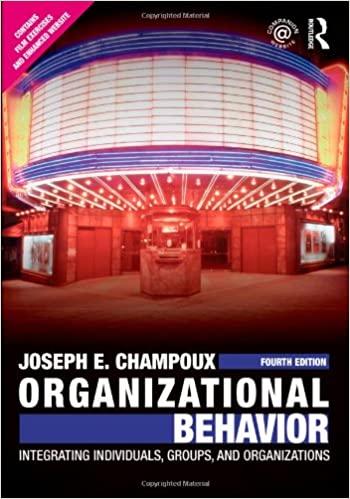Question
Elizabeth Elizabeth came to counselling because she was experiencing intense anger and was not coping with her life. She complained of failed relationships with her
Elizabeth Elizabeth came to counselling because she was experiencing intense anger and was not coping with her life. She complained of failed relationships with her ex-husband, and with another man whom she left her husband to be with. Elizabeth cannot move on from the anger she feels about her failed relationships, and she is feeling isolated from her family and friends. This influenced her ability to cope with her work. Therefore, Elizabeth has sold her successful business. Elizabeth is a mother of two; she has a son aged 18 and a daughter aged 15. She shares custody of the children with her ex-husband, Jodi, whom the children spend a lot of time with. Jodi lives with another woman, and they are engaged to be married. The children have a close relationship with their father and get along well with his new partner. Despite the separation, Elizabeth's ex-husband is still very much a part of her life through his relationship with the children. He has retained good relationships with her family and their mutual friends, who are very sympathetic towards him, since Elizabeth ended the relationship to be with another man. Elizabeth was resentful of this sympathy and of the strong relationship that the children had with their father. Elizabeth described her ex-husband as manipulative and verbally abusive. She felt that he was not supportive of the needs or her career. She finally ended this difficult relationship by leaving Jodi to be with someone who was more supportive of her at the time.
Your answer must include the following:
Identification of the historical origins and evolution of CBT and Psychodynamic therapy theories (approach, perspective, therapy)
Details about the typical counsellor/client relationship and any other elements of the CBT and Psychodynamic therapy (approach, perspective, therapy).
Application of, comparison and contrast between the CBT and Psychodynamic theories, (approach, perspective, therapy).
An outline of any ethical/legal issues to be considered,
An explanation of how you would use each of the CBT and Psychodynamic therapy counselling theoretical approaches, perspectives, or therapies to assist your client - make sure to compare different needs of each theory (approach, perspective, therapy) in relation to techniques.
A suggestion of a possible outcome for the client if the counselling is helpful.
You may also suggest the number of sessions, or any other requirements needed for the counselling to go ahead as planned, again comparing, and contrasting the CBT and Psychodynamic theories (approach, perspective, therapy).
A final statement that outlines which of the CBT and Psychodynamic therapy would best suit the client's needs, based on your analysis.
Step by Step Solution
3.44 Rating (157 Votes )
There are 3 Steps involved in it
Step: 1
Historical Origins and Evolution Cognitive Behavioral Therapy CBT CBT has its roots in the work of several early psychologistsincluding Aaron BeckAlbert Ellisand Donald MeichenbaumBecks work on cognit...
Get Instant Access to Expert-Tailored Solutions
See step-by-step solutions with expert insights and AI powered tools for academic success
Step: 2

Step: 3

Ace Your Homework with AI
Get the answers you need in no time with our AI-driven, step-by-step assistance
Get Started


